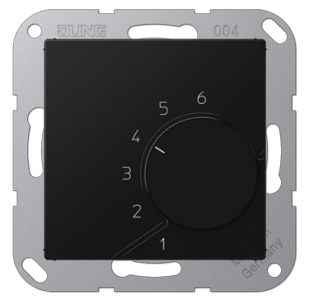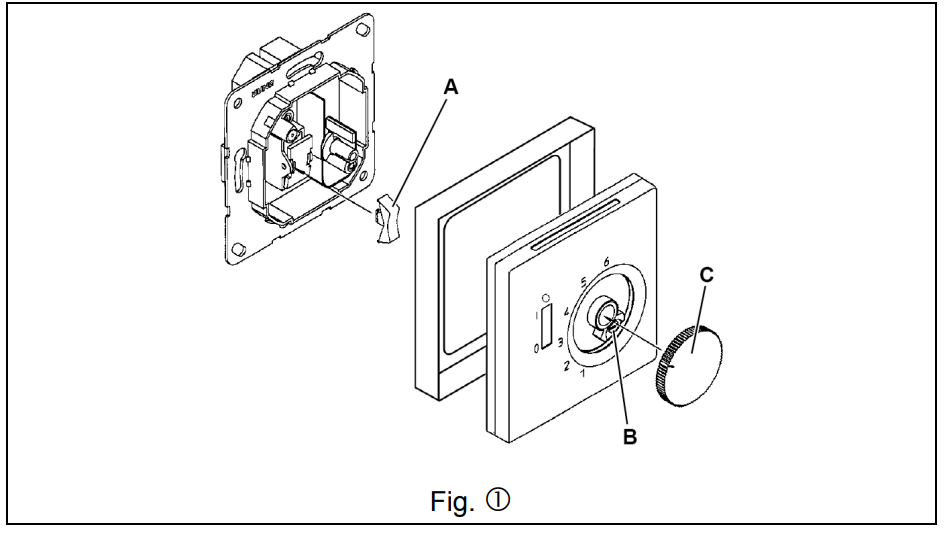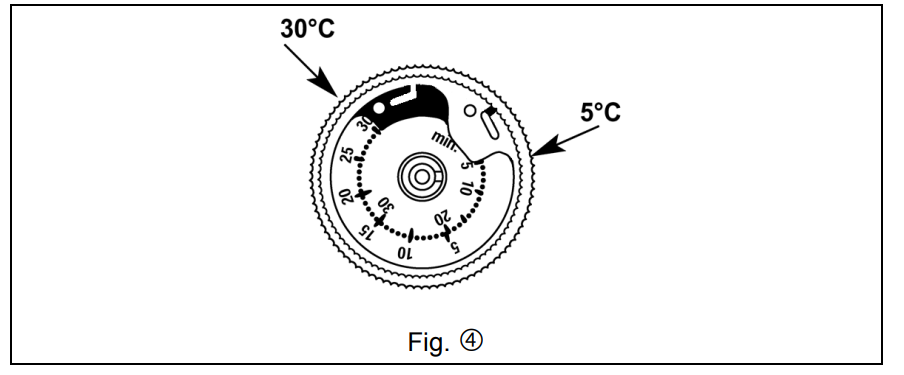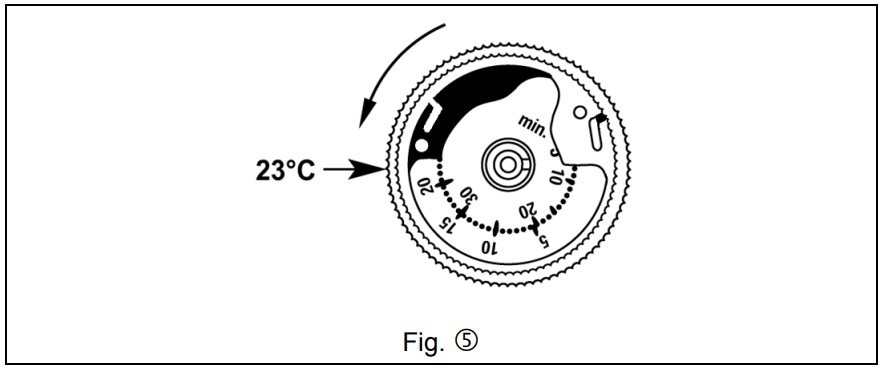JUNG TR A 231 WWM Room Thermostat

Area of application
The room temperature controller is used to regulate the temperature in closed rooms such as flats, schools, function suites, workshops, etc.
Safety instructions
Electrical equipment may only be installed and fitted by qualified electricians while observing the current accident prevention regulations. A relative air humidity of max. 95% may not be exceeded. Avoid any moisture condensation. Non-observance of the safety warnings or installation instructions may damage the device, or cause a fire or other hazards.
Installation
Notes:
- Mount the room temperature controller on an internal wall opposite the heat source if possible.
- Do not mount the room temperature controller on the outside walls.
- Avoid draughts from windows and doors.
- Ensure that the normal air circulation in the room reaches the controller without any obstacles.
- External heat sources influence the accuracy of the controller. Avoid direct sunlight and do not place heat-emitting devices in the vicinity of the room temperature controller (heaters, lamps, etc.).
- Dimmers also generate heat. If a controller is installed in a common switch frame with a dimmer, the distance between them should be as great as possible. When arranging them vertically, the controller must be installed underneath the dimmer.
Mounting height: approx. 1.5 m above the floor.
Mounted in a switch box in accordance with DIN 49 073.
Connection
- Carry out the electrical connection according to the respective wiring diagram (Fig. (2) or Fig. (3).
Note:
Ensure that the neutral conductor N is connected to terminal N. Considerable fluctuations in temperature may otherwise occur. Conductor cross-section: 1 to 2.5 mm2 solid conductor.
Symbols used in the wiring diagram:- L = L conductor
- N = N- conductor
 = Connection for the clock signal to reduce the temperature
= Connection for the clock signal to reduce the temperature = Heating
= Heating = Cooling
= Cooling- RF = Resistor for thermal feedback
- TA = Resistor for night reduction of room temperature
- Clip the rocker (A in Fig. 1) on the switch in the flush insert.
- Place the center plate together with the frame on the flush insert. The center plate must snap in place in the top left of the housing base.
- Tighten the screw (B).
- Clip on the setting knob (C).

Technical data
- TR 231 U TR 241 U
- Switching principle 1-pole break contact+on/off 1-pole break contact+on/off switch switch
- Temperature range 5 … 30 °C 5 … 30 °C
- Nominal voltage AC 230 V ~, 50/60 Hz AC 24 V ~
Nominal current* 10 (4) A 10 (4) A - The differential of functioning temperature is approx. 0.5 K approx. 0.5 K
- Temperature reduction approx. 4 K approx. 4 K
* The value in brackets indicates the inductive load at a cos φ of 0.6.
Subject to change without further notice.
- TR 236 U TR 246 U
- Switching principle 1-pole change over contact without switch 1-pole changeover contact without switch
- Temperature range 5 … 30°C 5 … 30 °C
- Nominal voltage AC 230 V ~, 50/60 Hz AC 24 V ~
- Nominal current*
- Heating 10 (4) A 10 (4) A
- Cooling 5 (2) A 5 (2) A
- The differential of functioning approx. 0.5 K approx. 0.5 K temperature
* The value in brackets indicates the inductive load at a cos φ of 0.6.
Subject to change without further notice.
Restricting the temperature setting range
- The temperature controller is set to ex-works to the maximum setting range of 5 °C to 30 °C. See Fig. 4.
Two adjustment rings are located in the setting knob. You can use these rings to restrict the temperature setting range required e.g. between 8 °C and 23 °C.
Procedure:
- Select the temperature limits. Example: max. 23 °C, min 8 °C
- Note!
First position the setting knob roughly in the center of the required setting range. Example: The center point between 8 °C and 23 °C is approximately 15 °C. - Now remove the setting knob.
- Set the red locating ring to the max. temperature limit. Example: 23 °C Rotate anti-clockwise. The numbers on the outer dial apply! Insert the tip of a pen in the hole and turn the red ring to the left until it reaches 23 °C (max. scale). See Fig. 5.

- Set the blue locating ring to the min. temperature limit. Example: 8 °C Rotate clockwise. The numbers on the inner dial apply. Insert the tip of a pen in the hole and turn the blue ring to the right until it reaches 8 °C (min. scale). See Fig.6
- Clip on the setting knob. The pointer must be roughly in the center of the new setting range (see point 2). Example: approx. 15 °C
Scale for setting the temperature with dials- 1 = approx. 05°C
- 2 = approx. 10°C
- 3 = approx. 15°C
- 4 = approx. 20°C
- 5 = approx. 25°C
- 6 = approx. 30°C
Symbols
- O Off
- I On
Guarantee
Our products are under guarantee within the scope of the statutory provisions.
Please return the unit postage paid to our central service department giving a brief description of the fault:
ALBRECHT JUNG GMBH & CO. KG
Service-Center
Kupferstr. 17-19
D-44532 Lünen
- Service-Line: 0 23 55 . 80 65 51
- Telefax: 0 23 55 . 80 61 89
- E-Mail: [email protected]
General equipment
- Service-Line: 0 23 55 . 80 65 55
- Telefax: 0 23 55 . 80 62 55
- E-Mail: [email protected]
KNX equipment
- Service-Line: 0 23 55 . 80 65 56
- Telefax: 0 23 55 . 80 62 55
- E-Mail: [email protected]
Reference
Download manual:
JUNG TR A 231 WWM Room Thermostat Operating Instructions
![]()


Leave a Reply